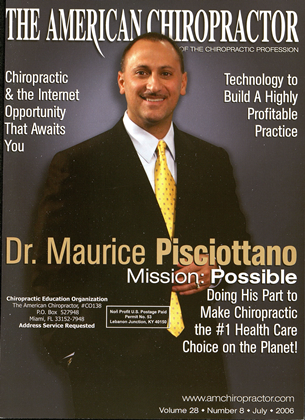Whiplash injury and oculomotor dysfunctions:' clinical-posturographic correlations . European Spine Journal March 22, 2006 Roberto Stoiaci, Alessandro Manelli, Nicola Schiavone, Lucia Mangia, Giangiacomo Prigione and Simone Sangiorgi FROM ABSTRACT: Oculomotor dysfunctions arc hidden causes of invalidity following whiplash injury. Many patients with whiplash injury grade II present oculomotor dysfunctions related to input disturbances of cervical or vestibular afferents. We used static posturography to investigate 40 consecutive patients with whiplash injury grade II and oculomotor dysfunctions. Oculomotor rehabilitation can resolve the impairment of vestibular function; but, if therapy is delayed or the patient has been wearing an orthopaedic neck collar, more therapeutic sessions are required. |IMPORTANT| In conclusion, without rehabilitation of the oculomotor muscles, other therapies are not sufficient to recover the impairment caused by whiplash injury. KEY POINTS FROM DAN MURPHY Whiplash injuries can produce neck pain, headache, nausea, vertigo, emotional and cognitive distur bance. Many patients with whiplash injury grade II present oculomotor dysfunc tions related to input disturbances of cervical or vestibular afferents. Oculomotor rehabilitation can re solve the impairment of vestibular function: but. if therapy is delayed or the patient has been wearing an orthopaedic neck collar, more therapeutic sessions are required. | IMPORTANT | Without rehabilitation of the oculo motor muscles, other therapies are not sufficient to recover the impair ment caused by whiplash injury. Oculomotor muscle disorders may be responsible for many symptoms and perpetuate neck pain. "The proprioceptive system of the neck muscles can influence the oculomotor and vestibular systems." |Very Important] The oculomotor system is an in dispensable structure that supplies useful information for both the sta bilization of the human body and for postural control. |Important] Oculomotor dysfunction is present in 62% of patients affected by whiplash injury. Oculomotor dysfunction and altera tions of cervical afferents are linked. | Very Important, because the sub- luxation complex is an alteration of cervical afferents.| Whiplash stretching of the cervical spine and the consequent traction on the brain structures (medulla, brain stem, cerebellum) can damage the oculomotor system, causing visual alterations and vestibular disorders without any evident organic intrinsic vestibular problem. Oculomotor dysfunction is known to be caused by whiplash injury. Postural problems and oculomotor problems are linked. 13)The inner car and proprioception maintain upright posture. 14)Oculomotor dysfunctions can include diplopia, altered oculomotor divergence, nausea or vertigo after convergence test. 15)Oculomotor dysfunction patients may require as many as 40 sessions of oculomotor rehabilitation. 16)Oculomotor dysfunctions and static posture are correlated, and both can be accurately assessed by static posturography sway (requiring specialized equipment). 17)Whiplash patients with no symptoms after trauma may still have oculomotor dysfunctions related to "cervical afferent input disturbances." [This is very important because it indicates that individuals with no symptoms following whiplash can still have objective signs of neurological injury that are consistent with the chiropractic subluxation.| 18) Neck collar use should be avoided because "using a neck collar for as long as 3 weeks reduces the probability of obtaining remission from the signs and symptoms observed" with rehabilitation. 19)"Oculomotor dysfunctions are encountered in many subjects with whiplash injury grade II and should be diagnosed as soon as possible after whiplash injury as they are responsible for a wide range of symptoms, such as vertigo and chronic cervical pain." |Key Point| 20)"If oculomotor dysfunctions are evident, oculomotor rehabilitation must be initiated immediately after injury." 21)"Underestimation of oculomotor dysfunction risks failure of other types of therapy." A I97H graduate of Western States Chiropractic College, Dr. Dan Murphy is on the faculty of Life Chiropractic College West, and is the Vice President of the International Chiropractic Association. For more information, visit www.ilanmurphydc.com.
 View Full Issue
View Full Issue






